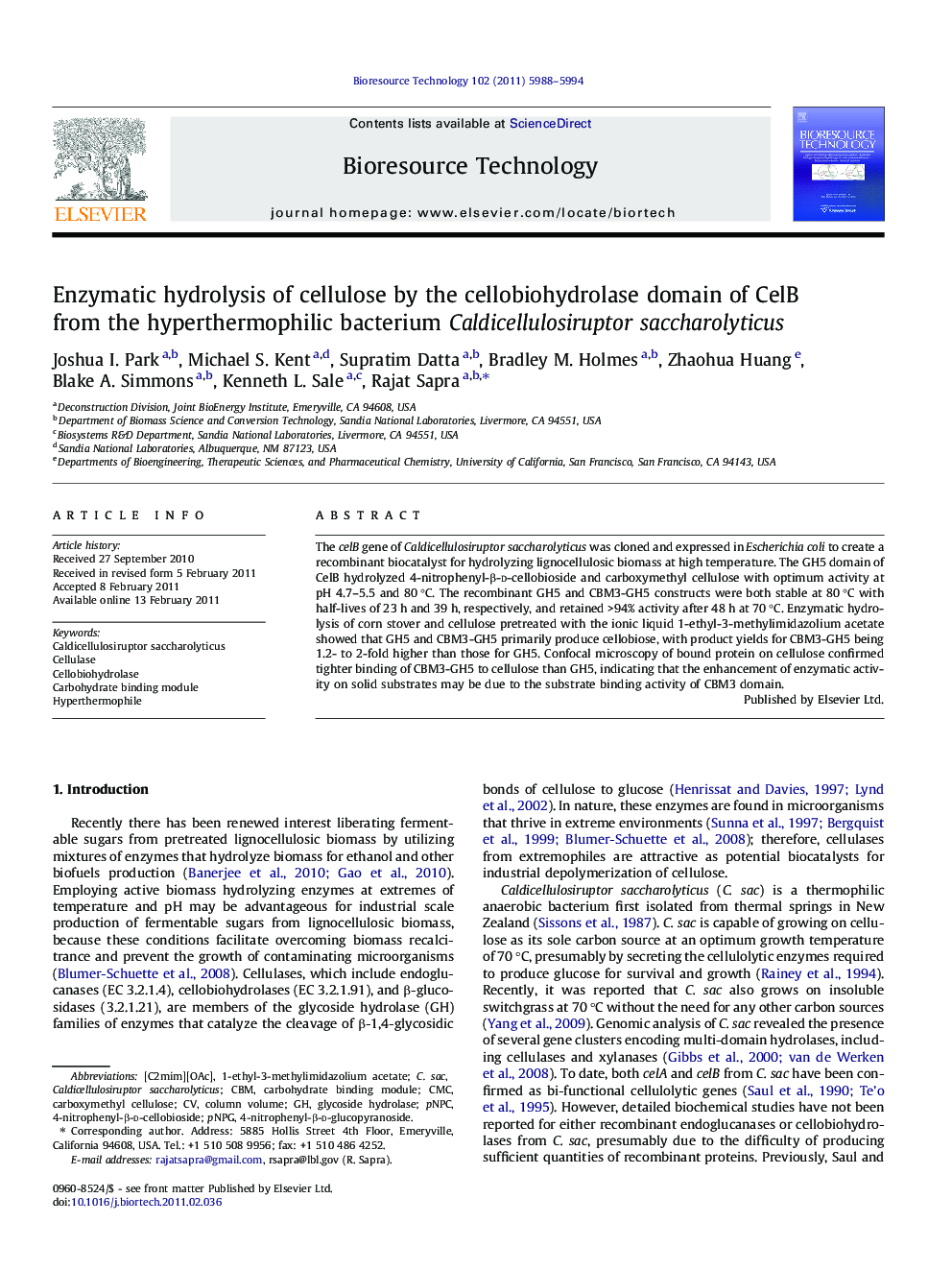| Article ID | Journal | Published Year | Pages | File Type |
|---|---|---|---|---|
| 681994 | Bioresource Technology | 2011 | 7 Pages |
The celB gene of Caldicellulosiruptor saccharolyticus was cloned and expressed in Escherichia coli to create a recombinant biocatalyst for hydrolyzing lignocellulosic biomass at high temperature. The GH5 domain of CelB hydrolyzed 4-nitrophenyl-β-d-cellobioside and carboxymethyl cellulose with optimum activity at pH 4.7–5.5 and 80 °C. The recombinant GH5 and CBM3-GH5 constructs were both stable at 80 °C with half-lives of 23 h and 39 h, respectively, and retained >94% activity after 48 h at 70 °C. Enzymatic hydrolysis of corn stover and cellulose pretreated with the ionic liquid 1-ethyl-3-methylimidazolium acetate showed that GH5 and CBM3-GH5 primarily produce cellobiose, with product yields for CBM3-GH5 being 1.2- to 2-fold higher than those for GH5. Confocal microscopy of bound protein on cellulose confirmed tighter binding of CBM3-GH5 to cellulose than GH5, indicating that the enhancement of enzymatic activity on solid substrates may be due to the substrate binding activity of CBM3 domain.
